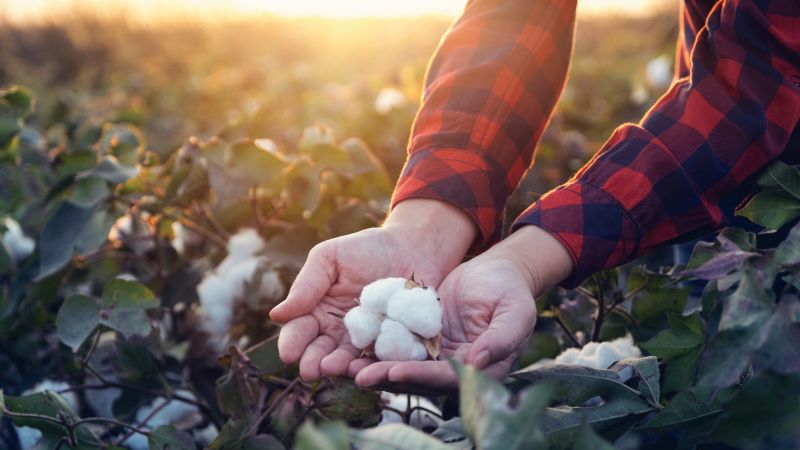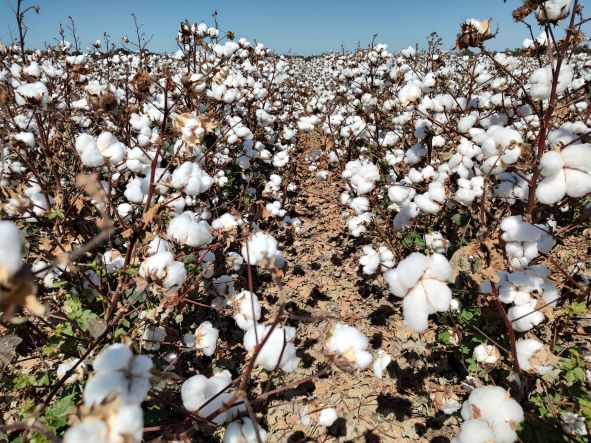Strong Varieties, Strategic Growth Help Americot Make Its Stand in Cottonseed
Chiree Fields remembers vividly the inauspicious launch of Americot. As the longest tenured employee of the company, she has seen it all unfold.
“When I started working for David Hicks (owner of Americot) in 2004, we had three Roundup Ready varieties and three conventional varieties, and we basically sold them here in West Texas,” recalls Fields, who is Americot General Manager. “When we stood Americot up as an independent company in 2006, we had one plant breeder, three sales reps in Texas, plus myself and Terry Campbell. That’s who we were, and we were successful in our own way.”
That timing was not exactly ideal for an upstart regional seed company. With most of the nation’s cotton acres tied to long-standing brands with successful high yielding varieties, solid financial backing and extensive breeding, research and sales structures, the key for a company like Americot was to find the niches where a smaller company could thrive – and to keep an eye open for opportunities to grow.
The first opportunity came quickly.
During a cotton seed industry restructuring in 2007, Americot surprised the industry by acquiring the NexGen brand, germplasm and breeding programs from Monsanto. That was soon followed by access to new weed control technologies.
“The new technology gave Americot a whole new opportunity,” says Fields. “XtendFlex changed our business. We’re thankful to have the opportunity to license these technologies and know that it’s a big part of our success. We had new products that were successful.”
The company certainly caught the industry’s attention when, in 2016, NG 3406 B2XF was noted as the top upland cotton variety planted in the U.S., as determined by the USDA Agricultural Marketing Service’s Cotton Varieties Planted report. The variety commanded nearly 12% of upland acres, with strong showings in the Southwest and Mid-South, and also remained a close second in the 2017 standings.
Growers Were Taking Notice
Roughly 60 miles separate the cotton fields of Duwane Billings in Seagraves, TX and Len Stanley in Levelland, TX. Both are long-time, successful growers who have seen cotton varieties and seed companies come and go over the decades. Both were familiar with NexGen varieties and were willing to take a closer look.
Billings, however, admits to some initial skepticism.
“It took me a long time to get past the fact that they had less expensive seed,” he says. “To me, that meant it likely wouldn’t produce like other seed varieties. I planted some of their NG 1511 B2RF several years ago, and it did well, so we have just steadily progressed with their seed. In our side-by-side trials, NexGen was doing better than or as well as the others. At some point, I have to say that’s money in my pocket.”
In 2017, Billings’ crop was the largest he’s ever grown, with several fields that produced more than four bales of cotton. He’s also now working closely with Americot on a water efficiency study.
“They have put together a heck of a team,” he adds. “If I have a problem, I can get somebody here quickly, and that’s a big deal to me.”
Stanley has also been impressed.
“In 2016, I had a 200-acre block of NG 3406 B2XF that averaged four bales per acre,” he says. “That was the best cotton I’ve ever made on a block that big. It just looked perfect in every way. So why wouldn’t you think that’s your cotton?”
After blight stunted his cotton in 2017, Stanley added NG 4689 B2XF, which has better disease resistance, to his fields this year. So far, he likes what he’s seen.
Positioning for Smart Growth
With a portfolio of successful varieties and expanding demand from growers, Fields says it was time to evaluate the entire company and its long-term goals to help maintain momentum.
“Initially, we were really just looking to next year,” she says. “We reached the point where we really saw a vision for Americot that could carry us years down the road. We needed to educate our sales staff differently. We needed to be more aggressive in breeding and research and make sure we were placing the right products in the right places to help farmers be more successful.”
Much of the heavy lifting in variety development has been done in recent years by Dr. Tom Brooks, who came to Americot around the same time as the NexGen acquisition in 2007. He worked as a part-time breeder with Dr. David Bush until Bush’s retirement in 2013, then served as a one-man breeding program based in Seminole, TX, while also managing regional nursery programs in the Southeast and Mid-South.
The company expanded its breeding program with the addition of industry veteran Dr. Lloyd McCall in June 2017, and recently added Dr. Mike Robinson and Mark Barfield as breeders based in Greenville, MS, and South Georgia, respectively.
“Tom built a great base for the breeding program,” says McCall. “Thanks to him, we have a good start with breeding programs for germplasm and nurseries and trials both in the Mid-South and Southeast. And now that we have Mike and Mark on board, we’re looking for facilities for our breeding programs in both of those regions.”
Brooks notes that, for now, all breeding work originates at the Seminole site, where they can manage nursery rows, variety evaluation, seed increases and small plot yield trials.
“Our breeding program is still relatively lean,” adds Brooks. “But we do have cooperators helping us with research plots across the Cotton Belt.”
To help bridge the gap between breeding and the sales force, Dr. Doug Jost joined Americot in April 2017 to help develop and build a field research program, working to test and evaluate new prospective varieties on a regional basis.
“Our group wants to help answer as many questions as possible about these new experimentals before we put a sellable seed in the ground,” explains Jost. “Our goal is to have a two-year evaluation cycle prior to commercialization. We need to know how these varieties react at a regional level, then put them in the right areas to succeed.”
Jost heads a program that has grown rapidly within the past year. Field researchers have been added in the Texas Coastal Plains, Northern High Plains, Arizona and the Mid-South, with additions also planned for the Carolinas and Georgia.
And, also during the past year, the company expanded its sales force to 68 representatives from the East Coast to West Texas, and upgraded its product management and marketing efforts.
“We’re making a strong commitment to the cotton industry,” points out Fields. “We’re unique in that we just focus on cotton. We’re going to maintain our growth, and I look forward to seeing what we can continue to do in the future.”
From Cotton Grower Magazine – August/September 2018









